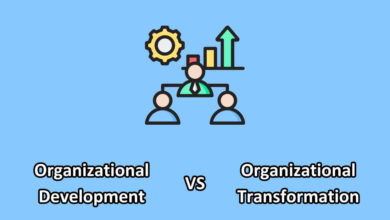Banks are important parts of an individual’s life. They play an important role in the financial sector of the state by mobilizing the savings of general people and entities. The central bank and commercial bank are the two types of banking that are available in every country. So, in this article, we will have a look at different concepts like, what is a central bank, its functions, what is a commercial bank and its functions, key differences, and a table comparing both central vs commercial bank in a side-by-side manner.
Central Bank Vs Commercial Bank (A Comparison)
| Central Bank | Commercial Bank |
|---|---|
| A central bank is a financial institution that is responsible for regulating the monetary policy of a country or group of countries. It also controls, manages, and looks after the nation’s banking system. | A commercial bank, on the other hand, is a financial institution that provides short-term financial facilities and banking services to the general public and businesses |
| It is concerned with public welfare and economic development | It works and seeks profits and earnings. |
| It acts as a banker, agent, or financial advisor for the government and financial institutions. | It acts as a banker to the general public or citizens. |
| Central banks have the authority to frame monetary and credit policy. | Commercial banks do not have the authority to frame any kind of monetary and credit policy. |
| A nation can have only one central bank. | There could be as many commercial banks as possible in a country. |
| They grant loans to commercial banks and the government | They grant loans to the general public or businesses. |
| Central banks have public ownership, i.e. they are owned by the nation’s government or ministry of finance. | Commercial banks can either have public or private ownership |
| The clients of the commercial banks are government and financial institutions. | Commercial Bank’s clients include public, firms, institutions, and organizations. |
What is a Central Bank?
A central bank or reserve bank is an apex(supreme) body and institution that manages the state’s currency, money, supply, and interest rates. The central banks usually also monitor and oversee the commercial banking system of their respective countries. It operates to control the economy, supply of money, and credit system of the country.
Central banks are the guardians of a nation’s monetary system. They oversee the issuance of currency, maintain monetary stability, and act as lenders of last resort to ensure financial system integrity. Their primary mandate is to control inflation, stabilize currency values, and ensure economic growth.
Functions Of Central Bank
Following are some of the main functions of the central bank.
- Issuing Of Notes- It is the central bank of the country so it has the monopoly right of issuing currency notes except coins and notes of small immensity.
- Banker to the government- The central bank works as the banker, agent, or financial advisor for the government.
- Banker to the Banks- It acts as a banker to the various commercial banks and maintains the balance of the other banks in the form of cash reserves.
- Custodians Of the Nation’s Reserves- It acts as a custodian and maintains the proper balance and reserves of foreign exchange.
- Collection Of Data- In order to check the economic growth in an economy, the Central Bank time to time collects and publishes the required data relating to the banking and financial sector of the country.
- Control of Credit- It controls and oversees the credit and monetary policy of the state or nation.
What is a Commercial Bank?
A commercial bank offers services to the general public and to companies. A commercial bank is a profit-based financial institution that grants loans, accepts deposits, and offers other financial services such as overdraft facilities and electronic transfer of funds.
Commercial banks serve as the bridge between the central bank and the public. They take deposits, offer loans, and provide an array of financial services. Their main objectives are profit-oriented, striving to generate income from the interest margin and fees.
Unlike central banks, commercial banks are driven by profit motives. They aim to attract depositors, lend responsibly, and invest wisely to maximize profits.
Functions Of Commercial Bank
Some of the major functions of a commercial bank are as follows.
- A commercial bank accepts deposits from the general public, companies, and institutions.
- They provide advance loans in the form of cash credits, overdraft facilities, short-term loans, etc.
- It also performs agency functions like collections and payment of cheques, rents, insurance, policies, etc.
- Also, they collect, transfer, and make payments of funds on behalf of the customer.
- Commercial banks issue letters of reference to provide knowledge about the creditworthiness of the customer.
Key Differences Between Central Bank And Commercial Bank
While comparing central banks vs commercial banks, we have included some of the key differences between them as well. These are as follows:
- Meaning – A central bank or reserve bank is an apex(supreme) body and institution that manages the state’s currency, money, supply, and interest rates. On the other hand, A Commercial bank is a profit-based financial institution that grants loans, accepts deposits, and offers other financial services such as overdraft facilities and electronic and electronic transfer of funds.
- Objective – The central bank is the banking institution that is concerned with public welfare and does not seek profits. On the other hand, the commercial bank works and seeks profits and earnings.
The following table shows an in-depth comparison between a central bank vs a commercial bank.
Monetary Policy and Central Banks
Central banks wield significant power in shaping economic outcomes through monetary policy. They adjust interest rates, manage the money supply, and use open market operations to control economic conditions. The ultimate goal is to achieve price stability and sustainable growth.
Central banks use interest rate adjustments to control borrowing costs and stimulate or slow down economic activities. Their actions also impact inflation by regulating the money supply. A careful balance of these elements is crucial to ensure a healthy economy.
Banking Services and Commercial Banks
Commercial banks offer a wide array of services, including savings and checking accounts, loans, credit cards, and investment products. They act as financial intermediaries, facilitating transactions and managing risk for their clients.
Commercial banks are the engines that drive everyday financial activities. They enable individuals and businesses to access funds, make payments, and secure credit, underpinning the daily financial operations of modern society.
Regulation and Oversight
Both central and commercial banks operate under strict regulatory frameworks to ensure financial stability and protect consumers. These regulations govern areas such as capital requirements, risk management, and consumer protection.
Central banks are often government-owned and subject to government oversight, while commercial banks are privately owned and regulated by government agencies. This distinction reflects the unique roles and responsibilities of these institutions.
Conclusion
With the above explanations and discussions, we can simply conclude that central and commercial banks have distinct roles and objectives, with central banks focusing on macroeconomic stability and commercial banks serving individual financial needs.
Despite their differences, central and commercial banks have a symbiotic relationship. Central banks rely on commercial banks to transmit monetary policy, and commercial banks depend on central banks for financial stability and liquidity in times of crisis. Together, they form the backbone of the financial world.
A central bank or reserve bank is an apex(supreme) body and institution that manages the state’s currency, money, supply, and interest rates. On the other hand, A Commercial bank is a profit-based financial institution that grants loans, accepts deposits, and offers other financial services such as overdraft facilities and electronic and electronic transfer of funds.
FAQs about Central vs. Commercial Bank
What is the main Difference Between Central and Commercial Banks?
The main difference lies in their roles and objectives. Central banks focus on macroeconomic stability, regulating the money supply, controlling inflation, and maintaining financial stability. Commercial banks, on the other hand, are profit-oriented institutions that provide various financial services to individual customers and businesses.
What is the Primary Role of a Central Bank?
The primary role of a central bank is to oversee a nation’s monetary system. It is responsible for issuing and regulating currency, controlling inflation, stabilizing currency values, and ensuring the overall financial stability and economic growth of the country.
How do Commercial Banks Differ from Investment Banks?
Commercial banks focus on retail banking services, such as taking deposits, providing loans, and offering financial products to consumers and businesses. In contrast, investment banks specialize in advisory services, underwriting, and facilitating complex financial transactions for corporations, institutions, and governments.
What is the Significance of Financial Regulations for Banks?
Financial regulations are crucial for banks as they help maintain the stability of the financial system and protect the interests of depositors and consumers. These regulations dictate capital requirements, risk management practices, and consumer protection measures to ensure the safe and responsible operation of banks, both central and commercial.
What are the Average Salaries of Central and Commercial Banks?
Salaries in central and commercial banks vary widely based on factors such as job roles, location, and experience. Central banks often pay competitive salaries to attract top talent in economics and finance. Commercial bank salaries vary even more, with positions ranging from tellers to high-paid executives, leading to a broad salary range across the industry. It’s essential to refer to specific job descriptions and regions for accurate salary information.



3 Comments